
Lakes Relatively Still Water


Lakes Objectives
- Classify lakes based on productivity and identify three different lake zones.
- Identify microscopic and macroscopic photosynthetic pond organisms.
- Identify microscopic and macroscopic pond consumers and incorporate them, along with producers and decomposers, into a pond food web.
In this section we are at different lakes.
Lakes contain water that primarily stays within a basin. There can be water movement on the surface or some water entering and leaving, but the bulk of water is not moving from one point to another (like in a stream).
Ponds are small lakes that can be strongly impacted by seasonal changes, sometimes completely freezing or drying out.
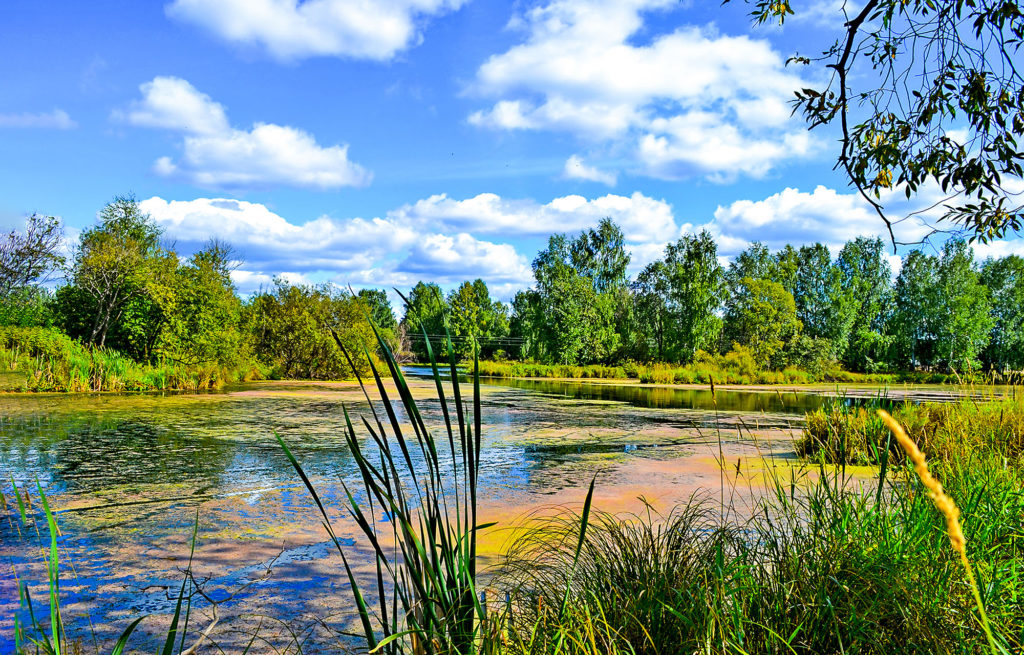
Lakes are classified based on productivity, the amount of photosynthesis occurring in lake producers.
Oligotrophic lakes have low levels of productivity, these are often clearer water.
Mesotrophic lakes have a middle level of productivity, enough photosynthesis to support a more complex food web.
Eutrophic lakes are high in productivity, so high they can be green in color.
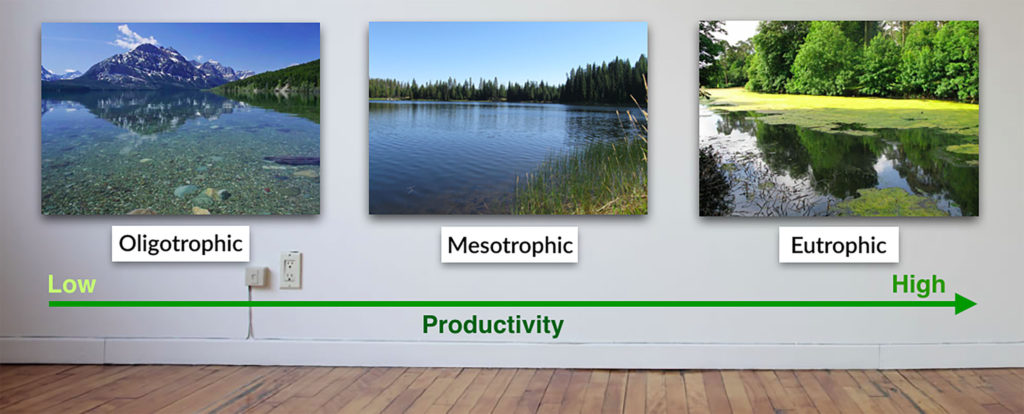
A highly eutrophic lake or pond can be “too much of a good thing.” This video explains why.
Crater Lake is an example of an oligotrophic lake. Productivity is low and the water is clear to well over a meter below the water’s surface.
Within a single lake, there are different zones that are impacted by the amount of available light and nutrients. Each zone can have its own organisms.
The Littoral lake zone is the area near shore that is shallow enough for light penetration. Many amphibians and aquatic insects spend part of their life cycle here.
The Limnetic lake zone is the open water area that sunlight penetrates. Many large fish swim here.
The Benthic lake zone is the bottom, below the sunlit limnetic zone. Although light is low, nutrients are high and scavengers like crayfish and catfish can be found here.
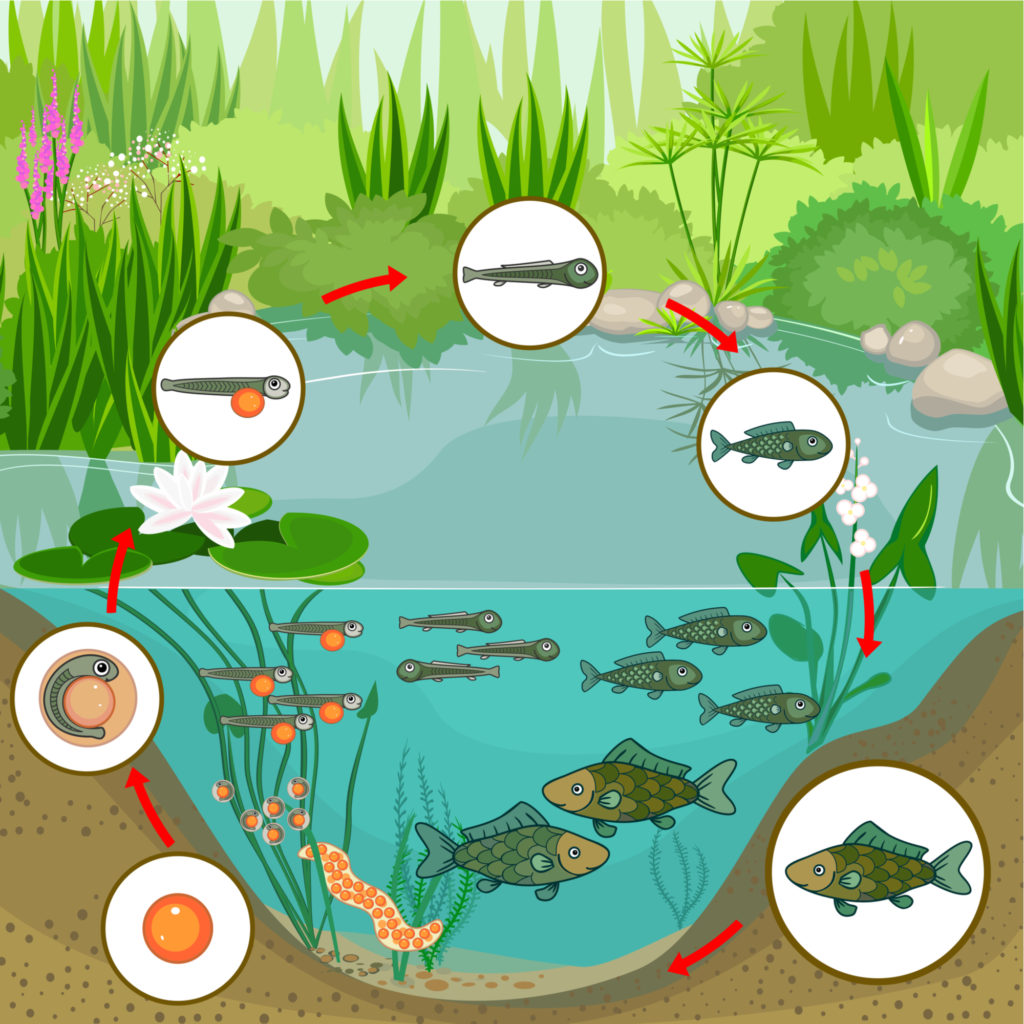
Some species utilize different zones in a lake during different life stages. For example, fish eggs may be laid on plants in the near shore littoral zone, but later stages of larger fish may swim and eat in the open limnetic zone.
For this guide’s media piece you will be identifying organisms from a small pond. To complete this successfully, we will start by introducing common categories of pond organisms and then introduce the assignment.
This video introduces some of the consumers and producers, both microscopic and macroscopic, that we may encounter in a pond sample.
Freshwater Producers
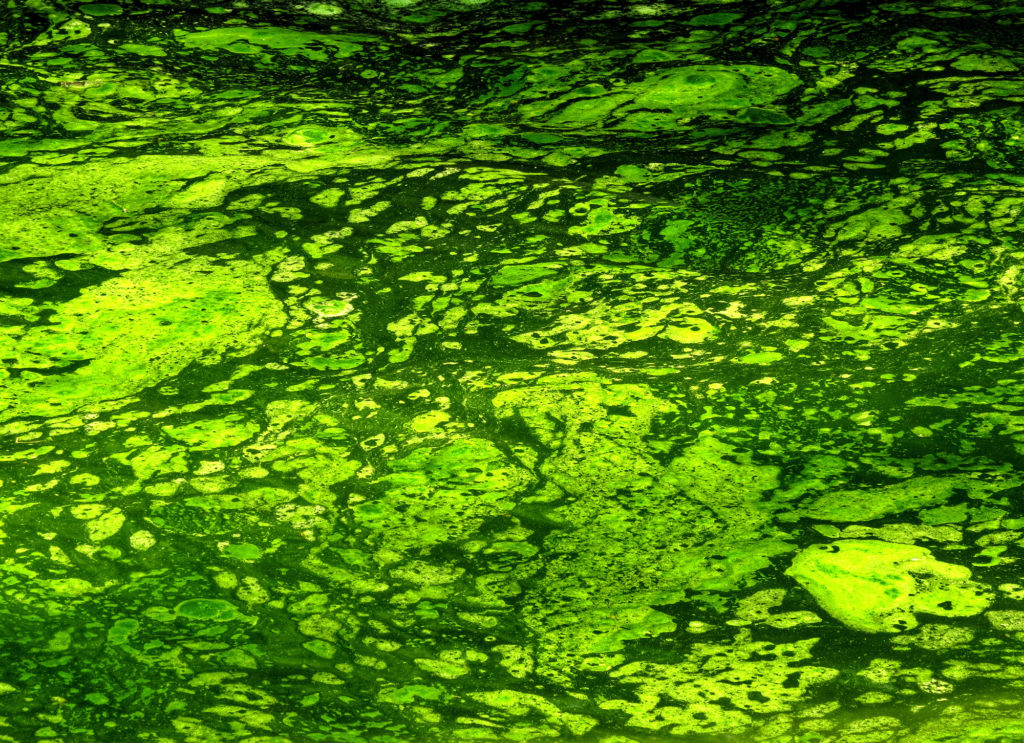
Eutrophic lakes and small ponds are typically very productive, meaning there are many producers, including algae and plants. Producers carry out the process of photosynthesis.
These are common microscopic producers that you are likely to find in a lake or pond.
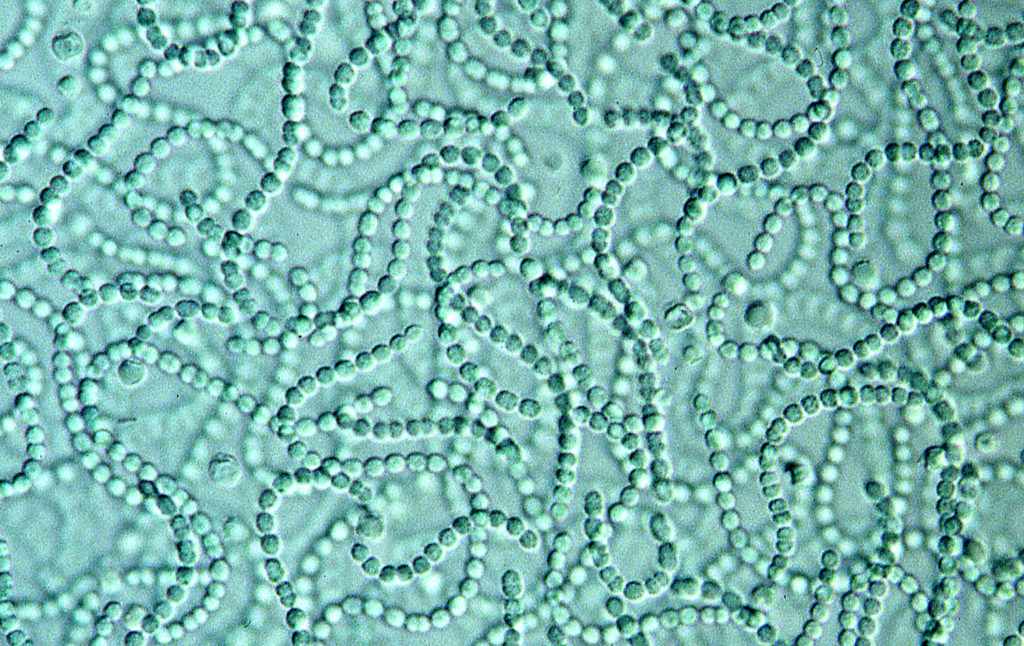
Cyanobacteria
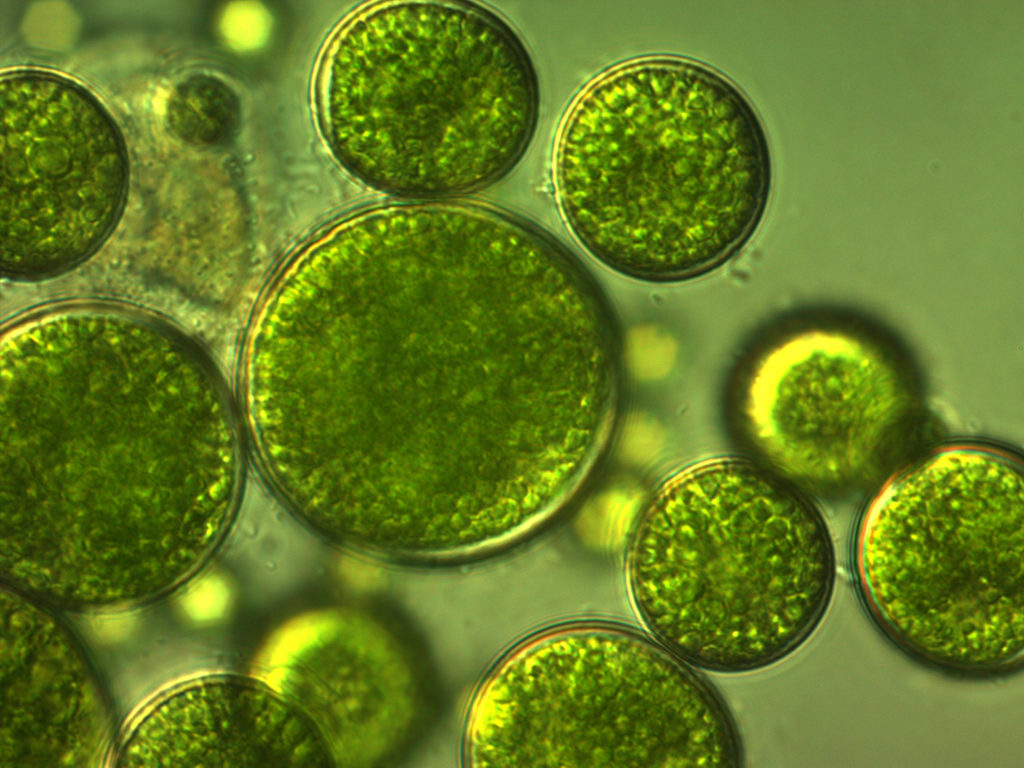
Algae
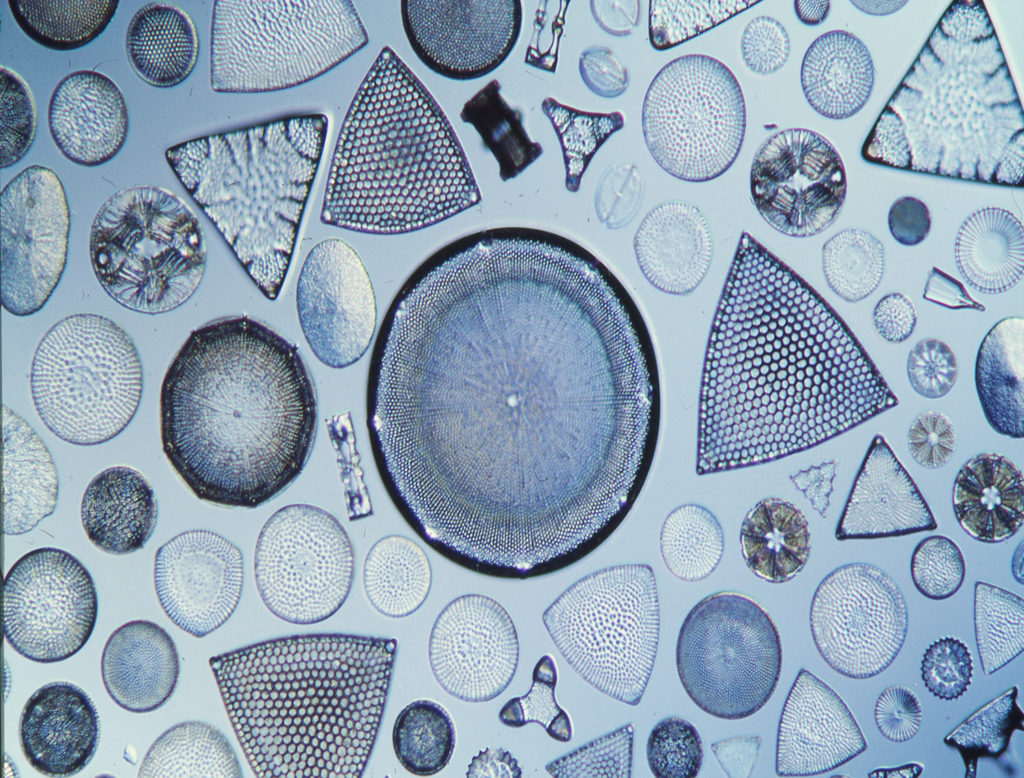
Diatoms
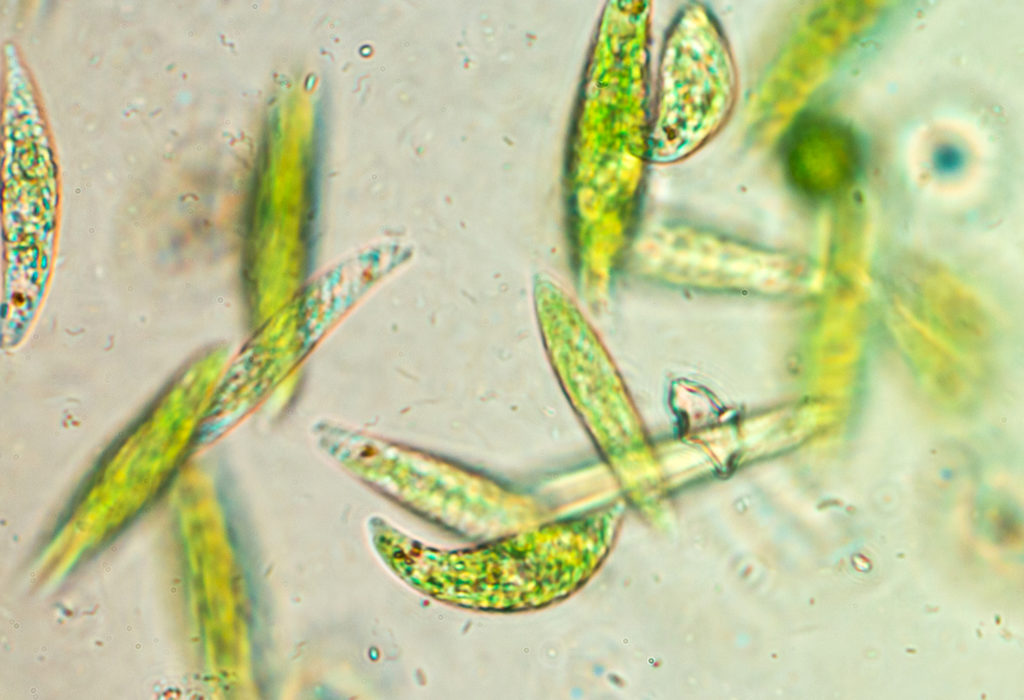
Euglena
These are larger producers; plants with strategies for obtaining sunlight.
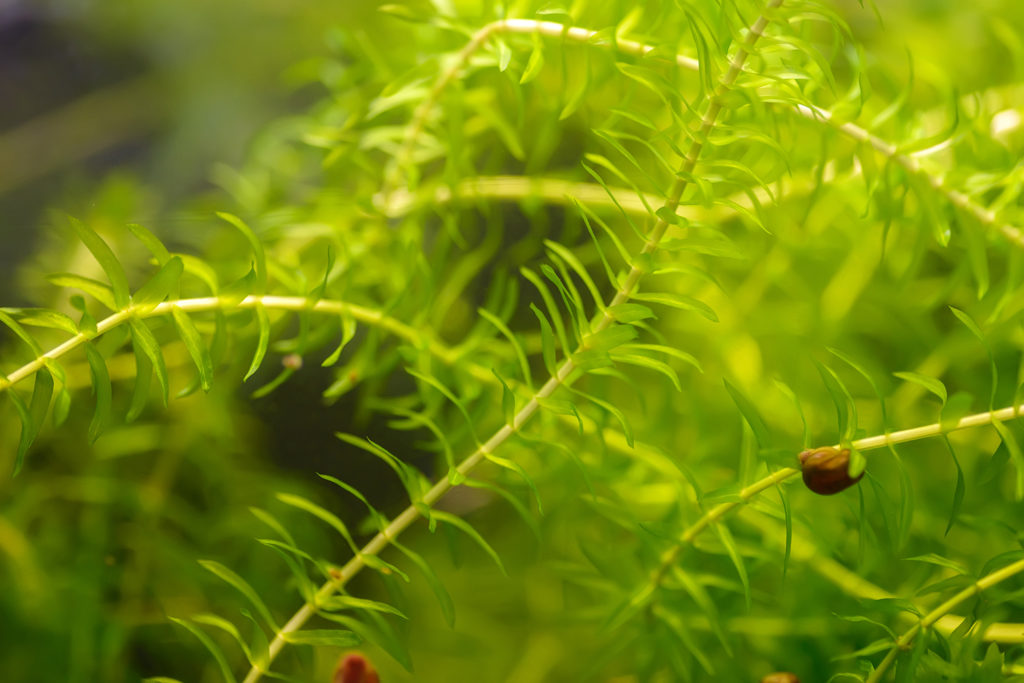
Elodea
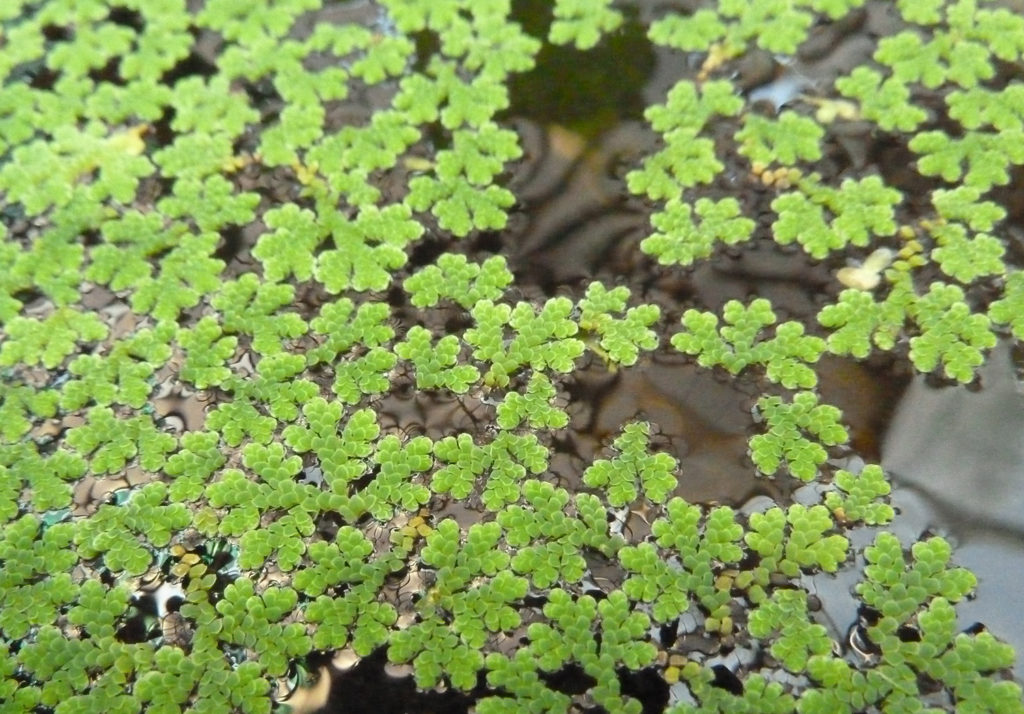
Azolla
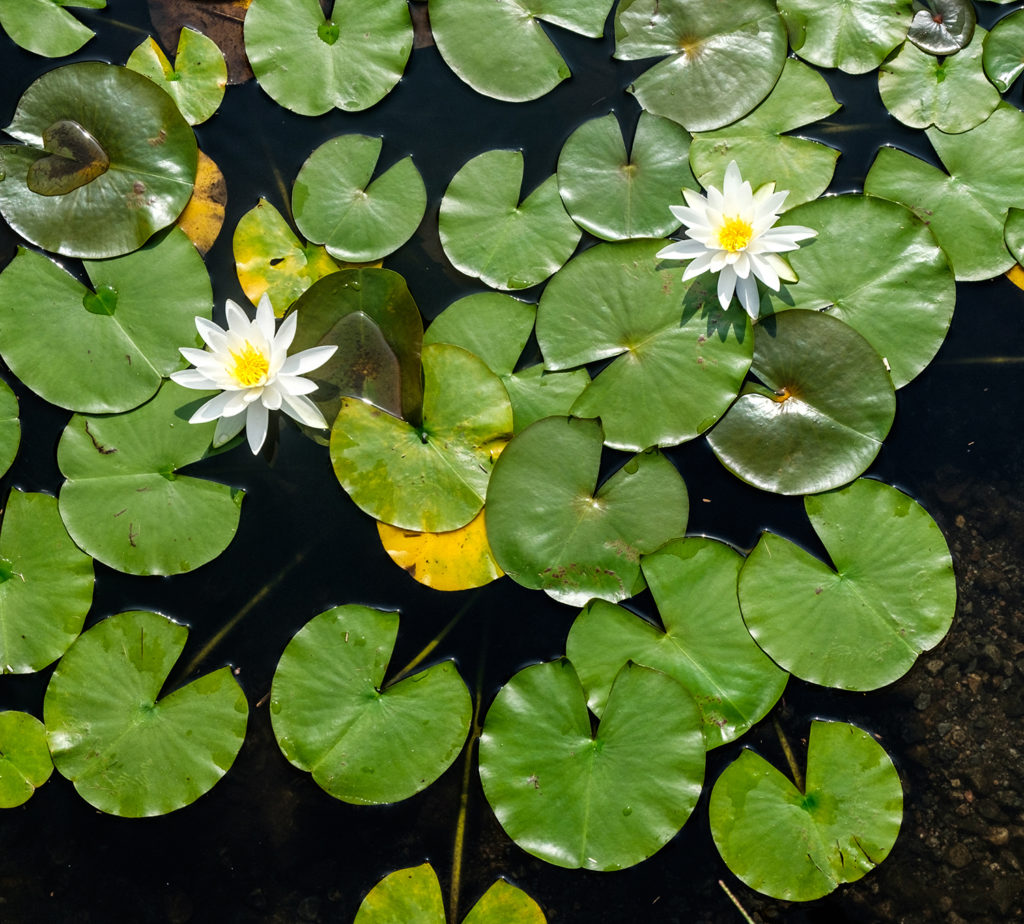
Water Lily
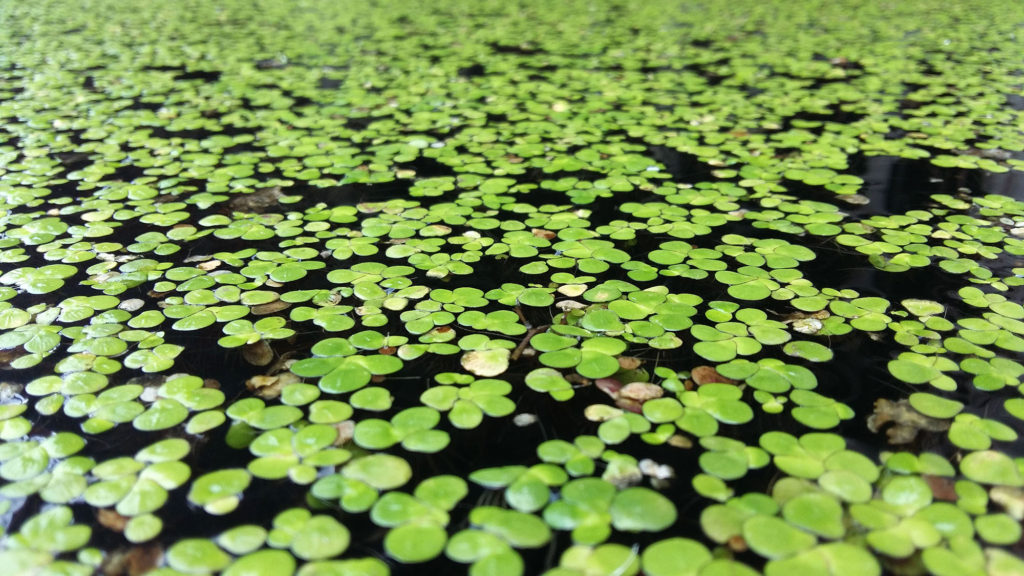
Duckweed
Duckweed and Azolla are not rooted into the soil like water lily plants; they float on top of the water. From earlier this term, what organims live within the Azolla, providing nitrogen?
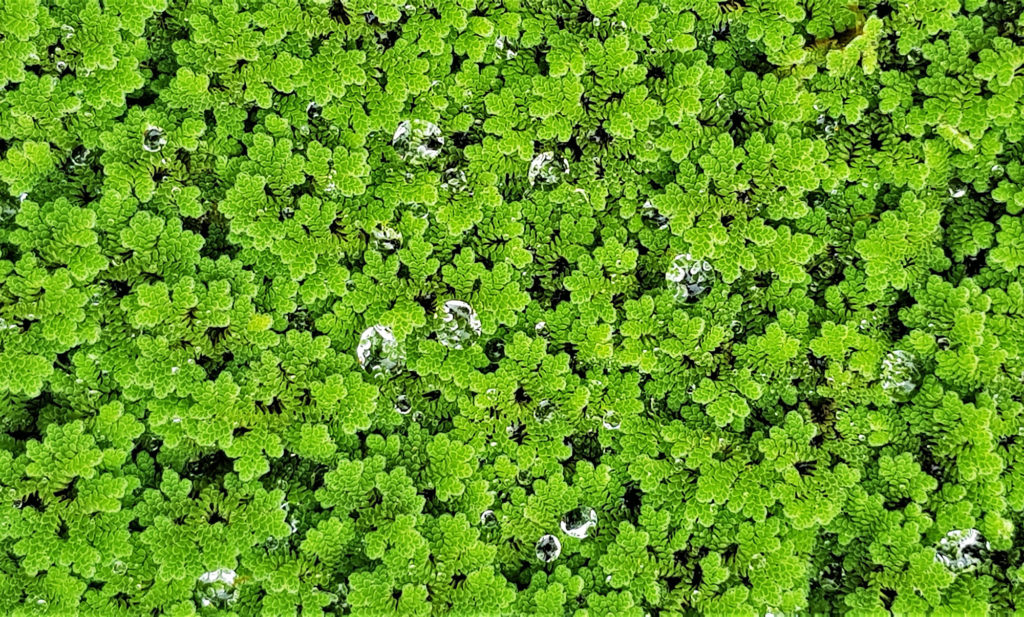
Azolla
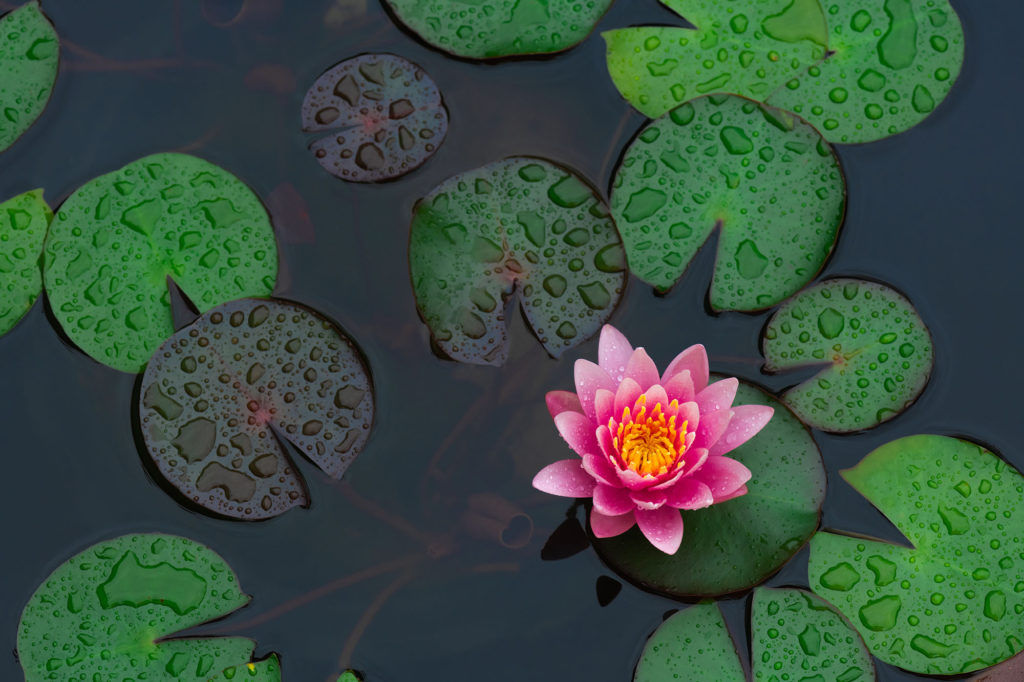
Aquatic plants found in local ponds have strategies for continuing photosynthesis in conditions that could impact gas exchange or light availability.
The leaves of this water lily plant have stomata located on the top of the leaves instead of on the bottom as you observed in an earlier lab. Why?
All three of the species below are submerged aquatic plants. Water is abundant, but what two other components of productivity can be limited?
Answer: light & nutrients
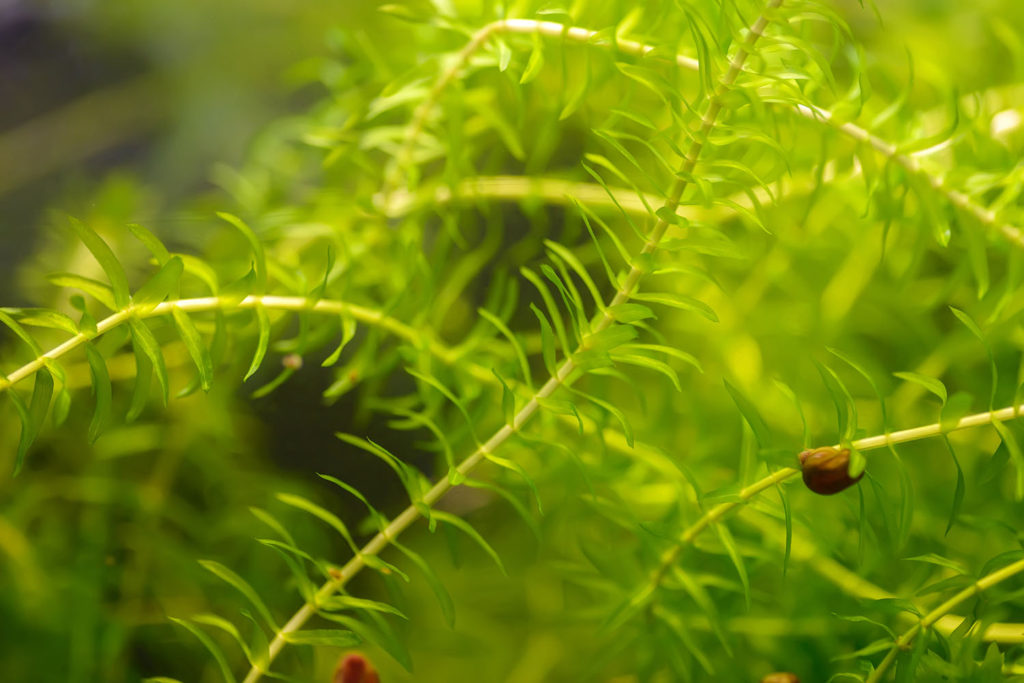
Elodea

Hornwort
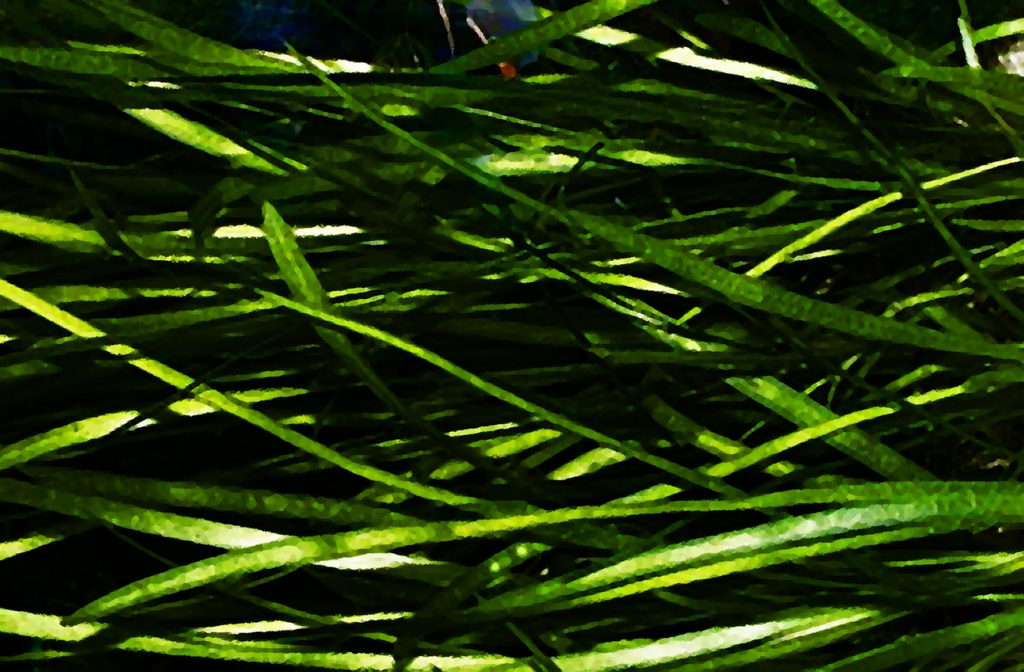
Vallisnaria
Freshwater Consumers
Here are a few examples of common microscopic lake and pond consumers.
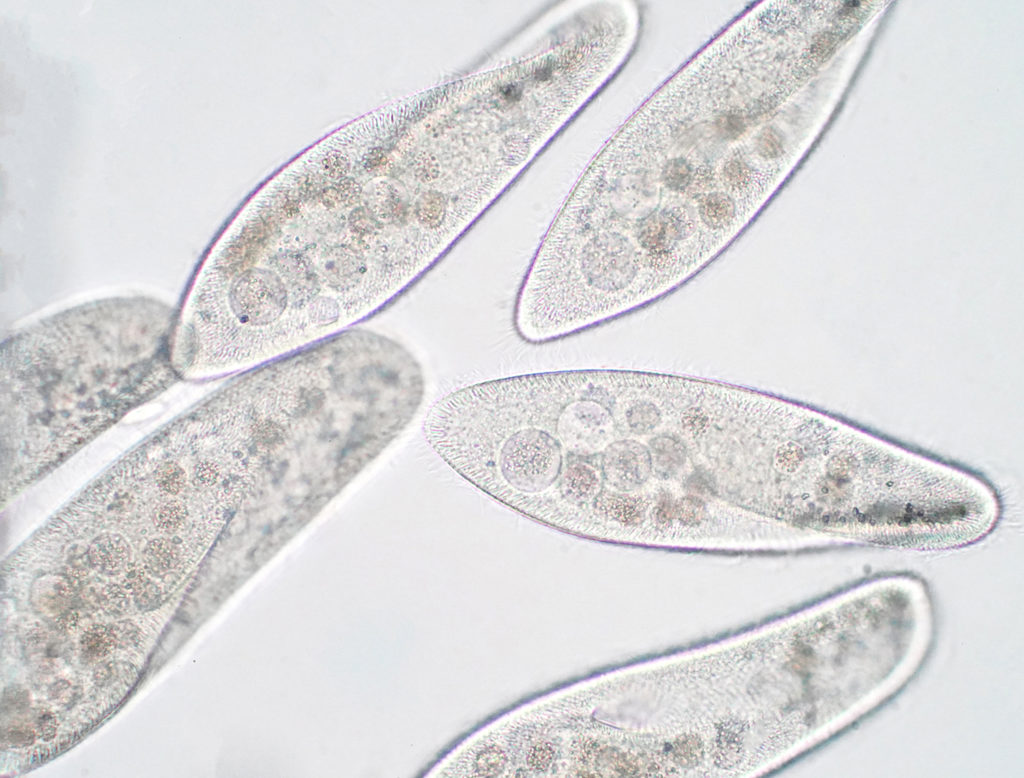
Paramecium
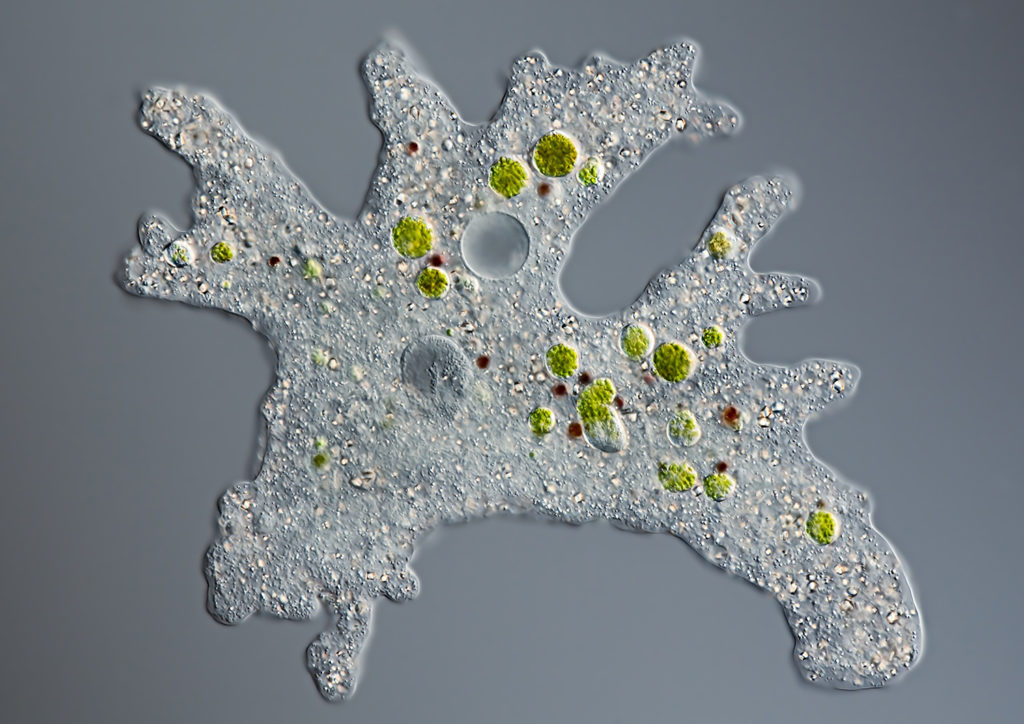
Amoeba
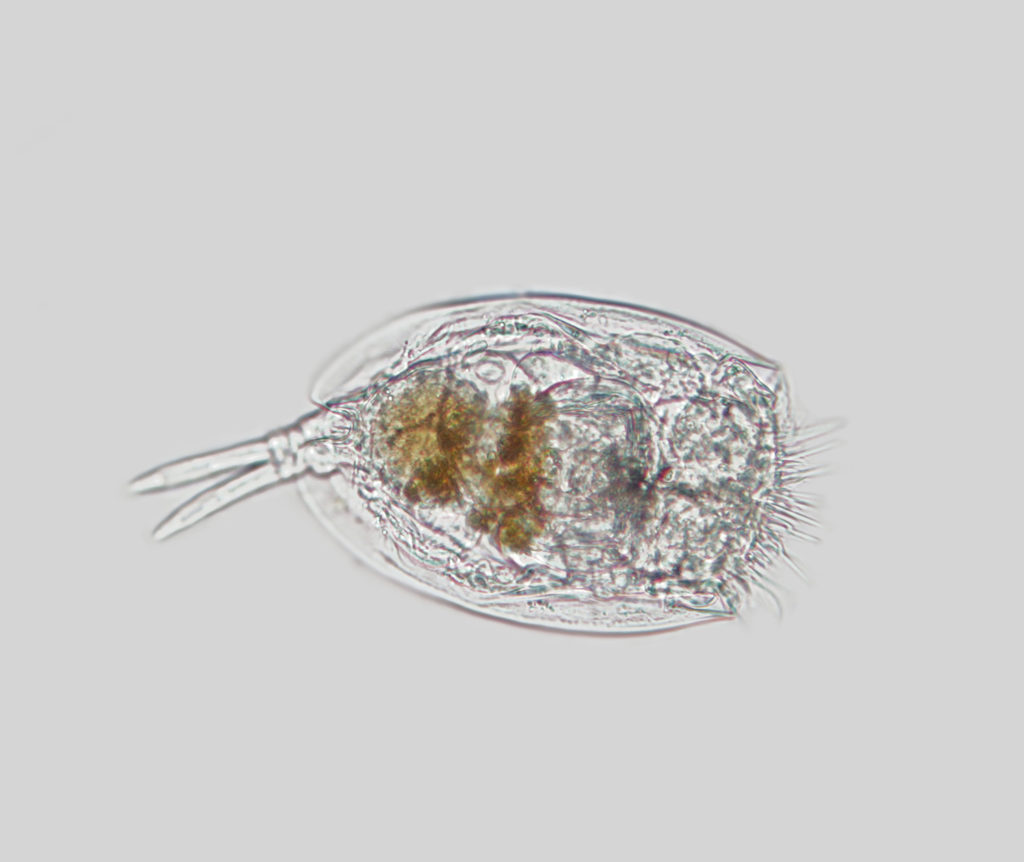
Rotifers
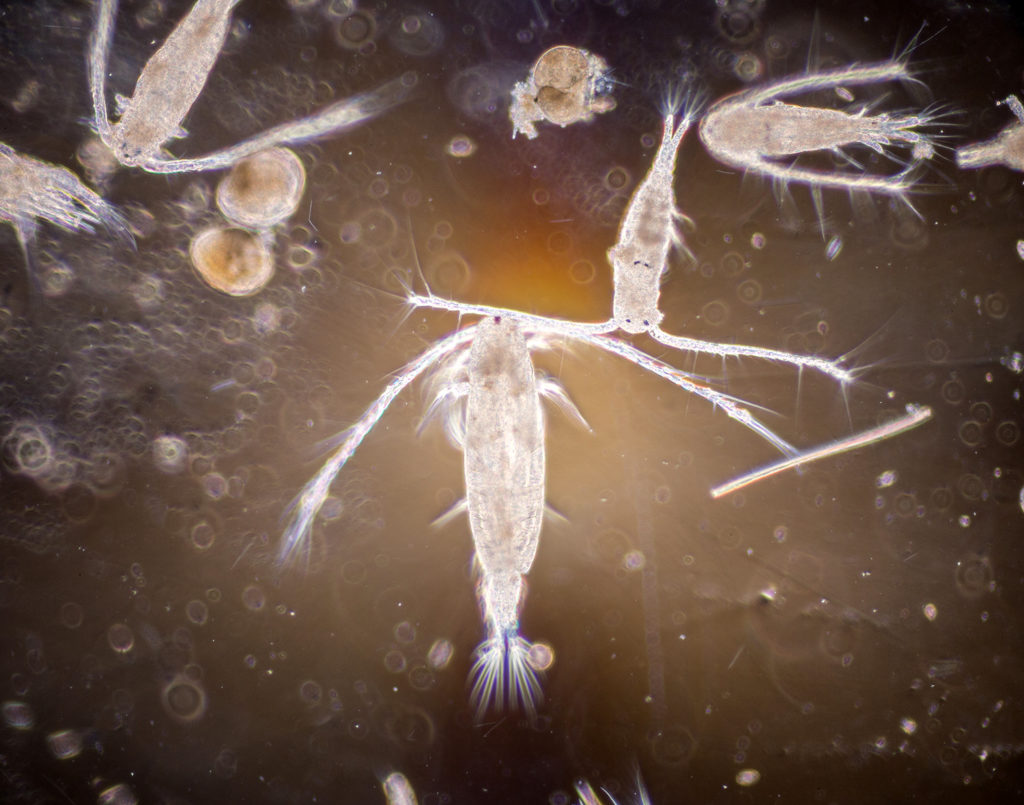
Copepods
This video shows models of two of the best known microscopic consumers.
These are a few commonly observed macroscopic (but still small) consumers.
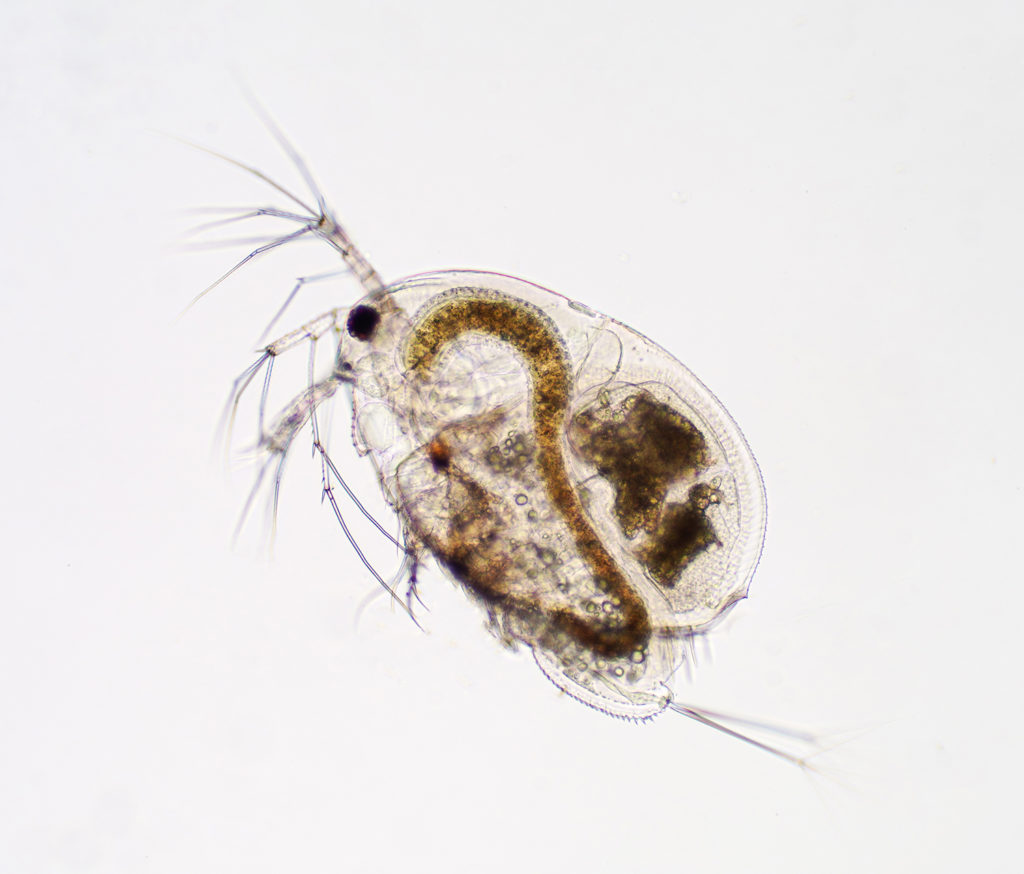
Daphnia
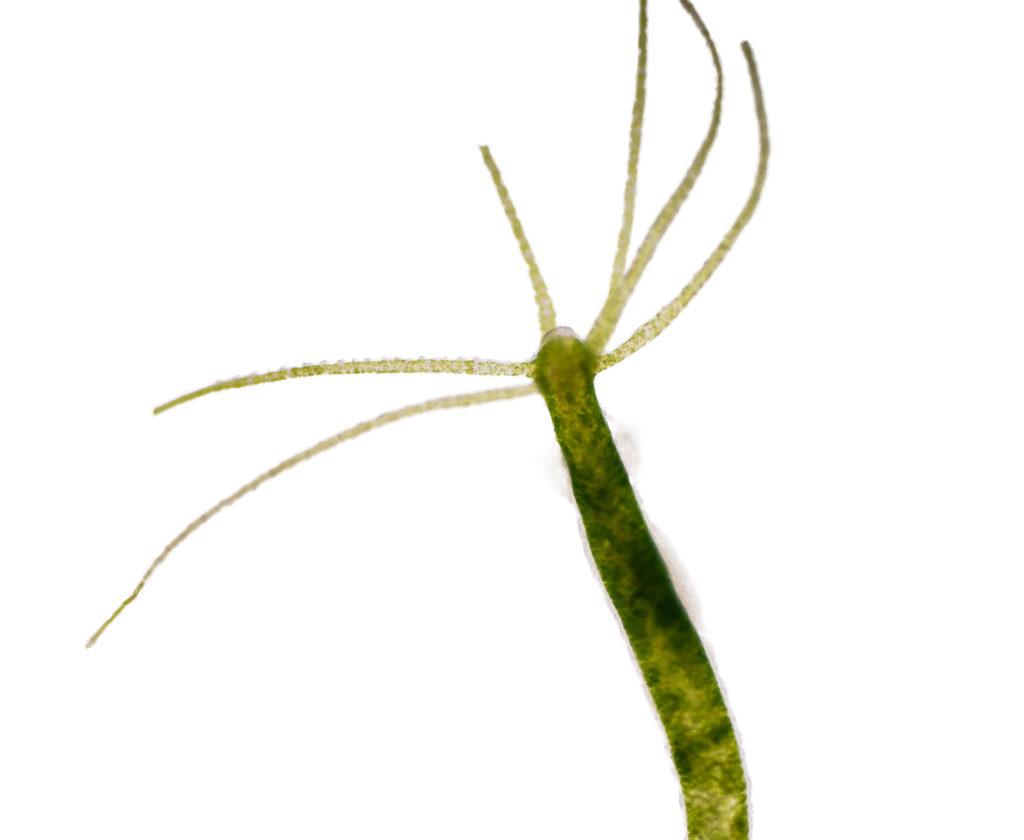
Hydra
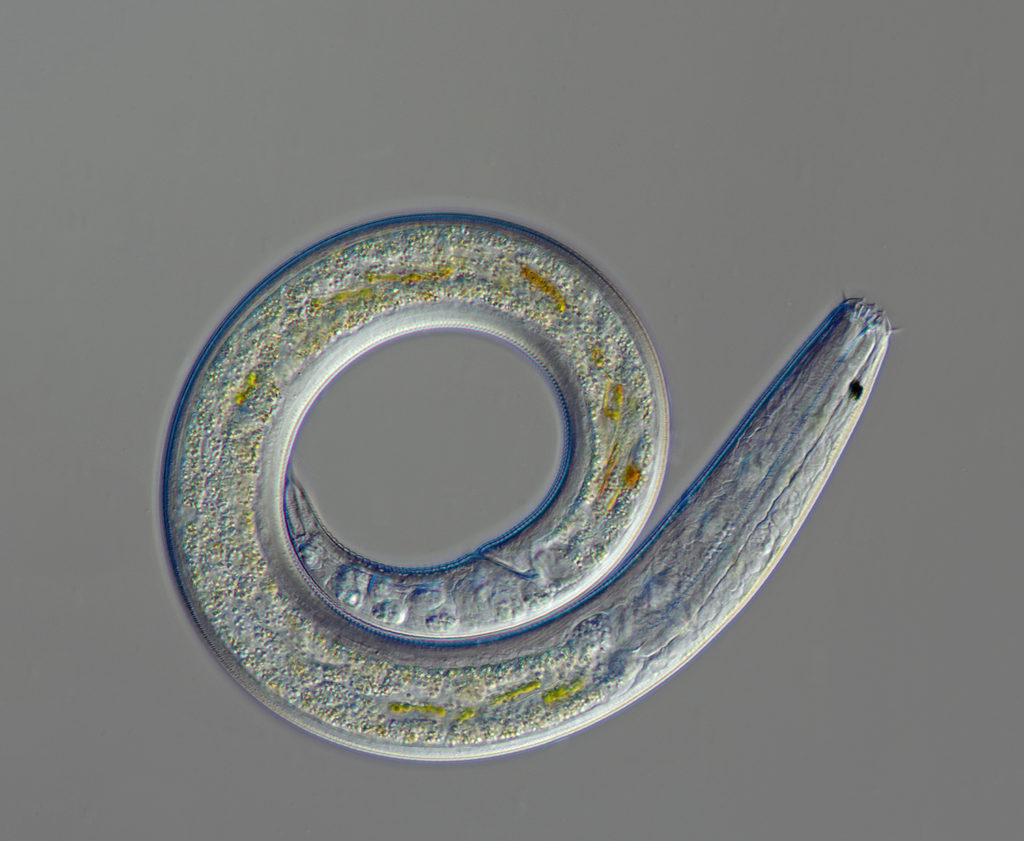
Nematodes
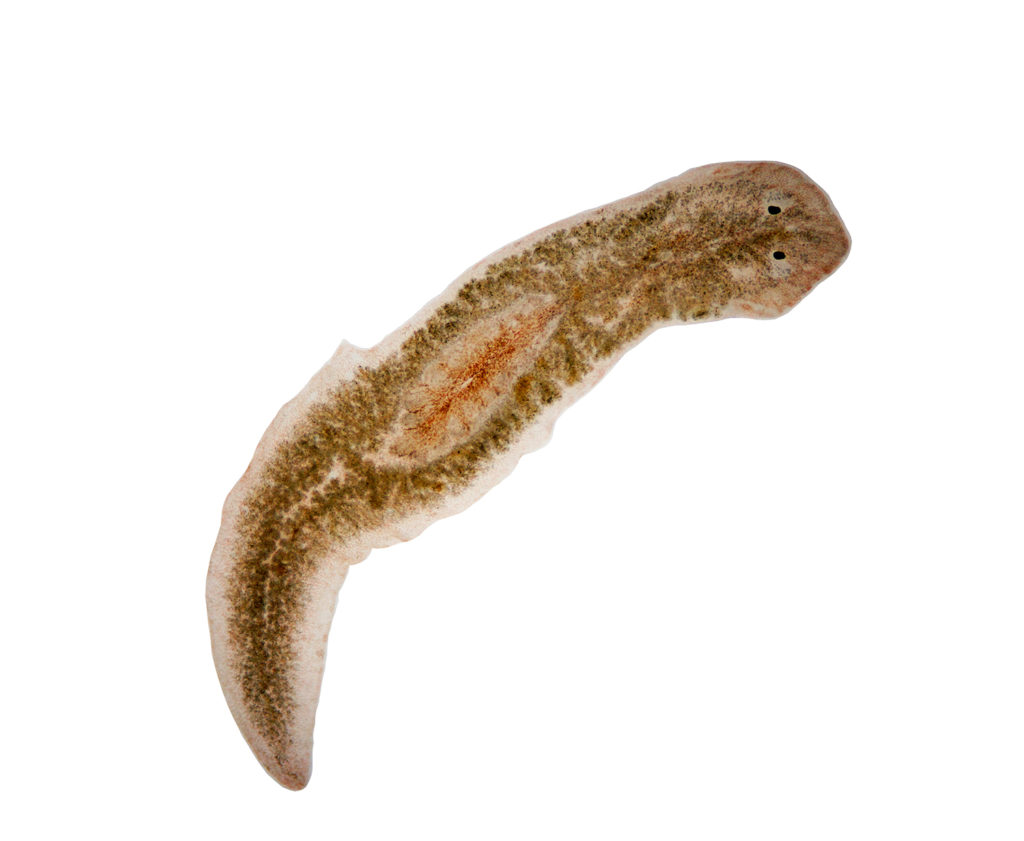
Planaria
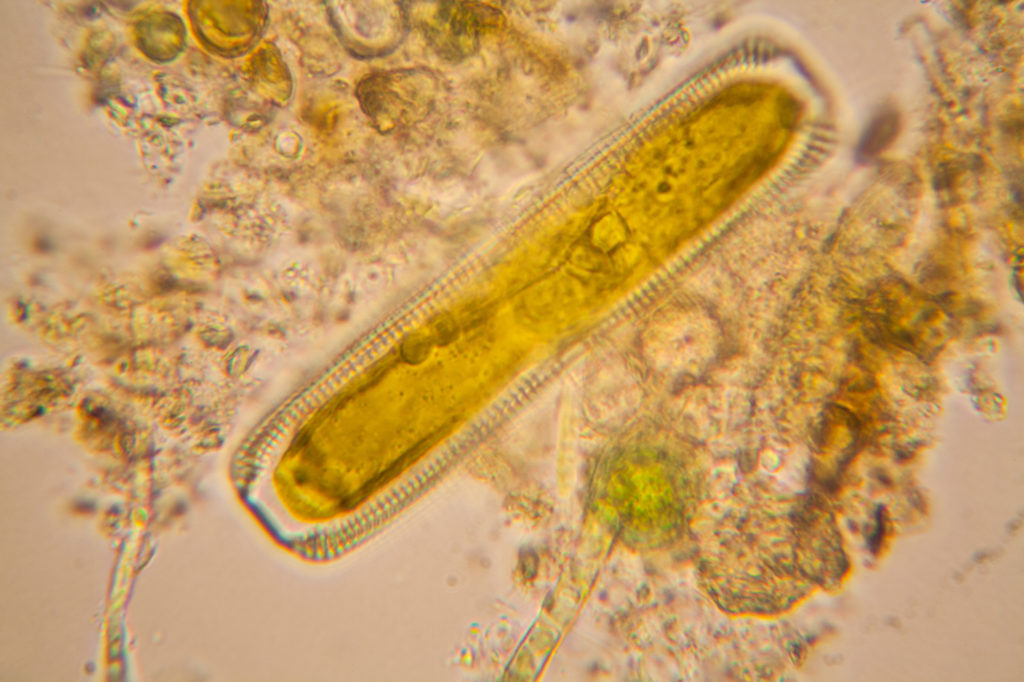
A food web would not be complete without decomposers. In aquatic ecosystems, bacteria are the primary decomposers.
In the middle of this photo is a single photosynthetic diatom. The smaller brownish material around it may be bacteria, they are more difficult to identify.
Sunlight energy continually enters a pond wood web, and is converted by photosynthetic producers into energy-rich sugars. Organisms convert that sugar energy into heat that is lost from the system.
Decomposers enable nutrients from dead organisms to re-enter the food web’s producers, cycling repeatedly over time.
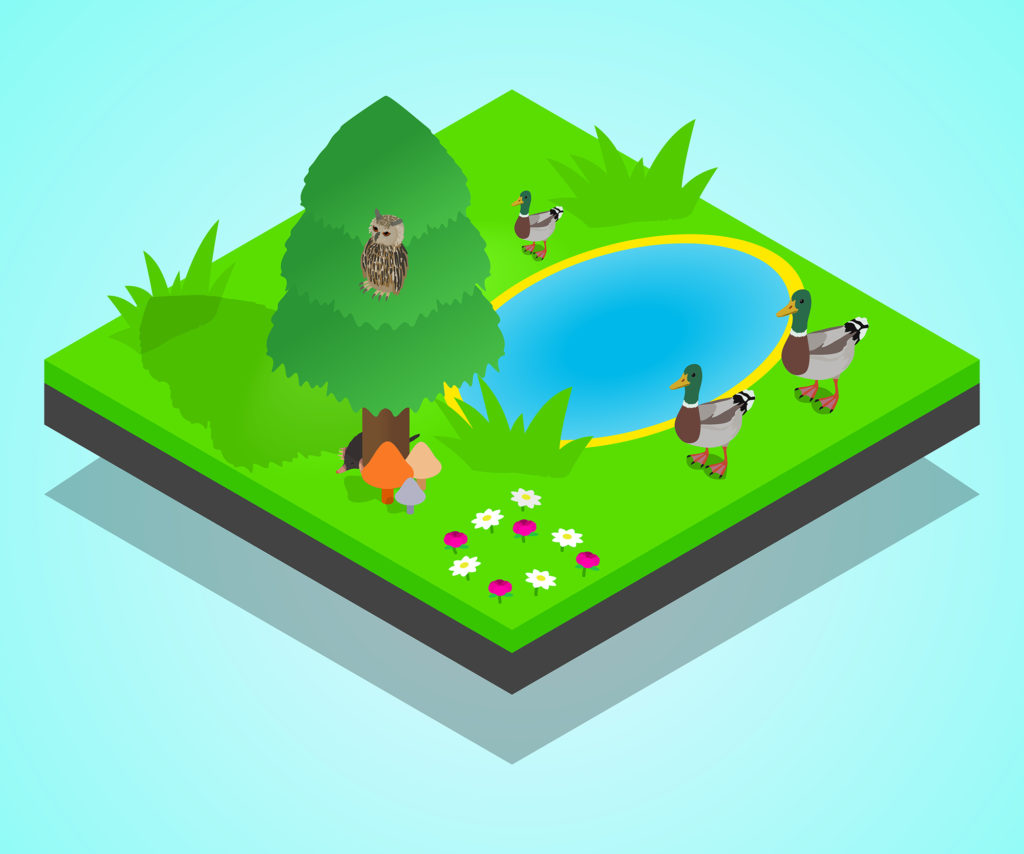
Now we will be linking the types of pond organisms to a real sample that will also be the basis for this guide’s media piece.
This is a pond Mark dug out about 20 years ago. It has slowly filled in with organisms and each year we find new organisms that have arrived by wind and bird.
This sample comes alive under the microscope. Check out how amazing the settled sample is, about 2:00 minutes into the video.
Here is an additional video with a very cool consumer that you can also use for your media piece.
Start this Guide’s media piece here
Pond Food Web
Sketch and label the food web for the pond in the videos. Include the following in your labeled sketch:
- examples of producers (microscopic and macroscopic)
- examples of consumers (microscopic and macroscopic)
- decomposers (may have to make these up; they are hard to observe)
- arrows for energy flow (including sun and heat)
- arrows for nutrient cycling
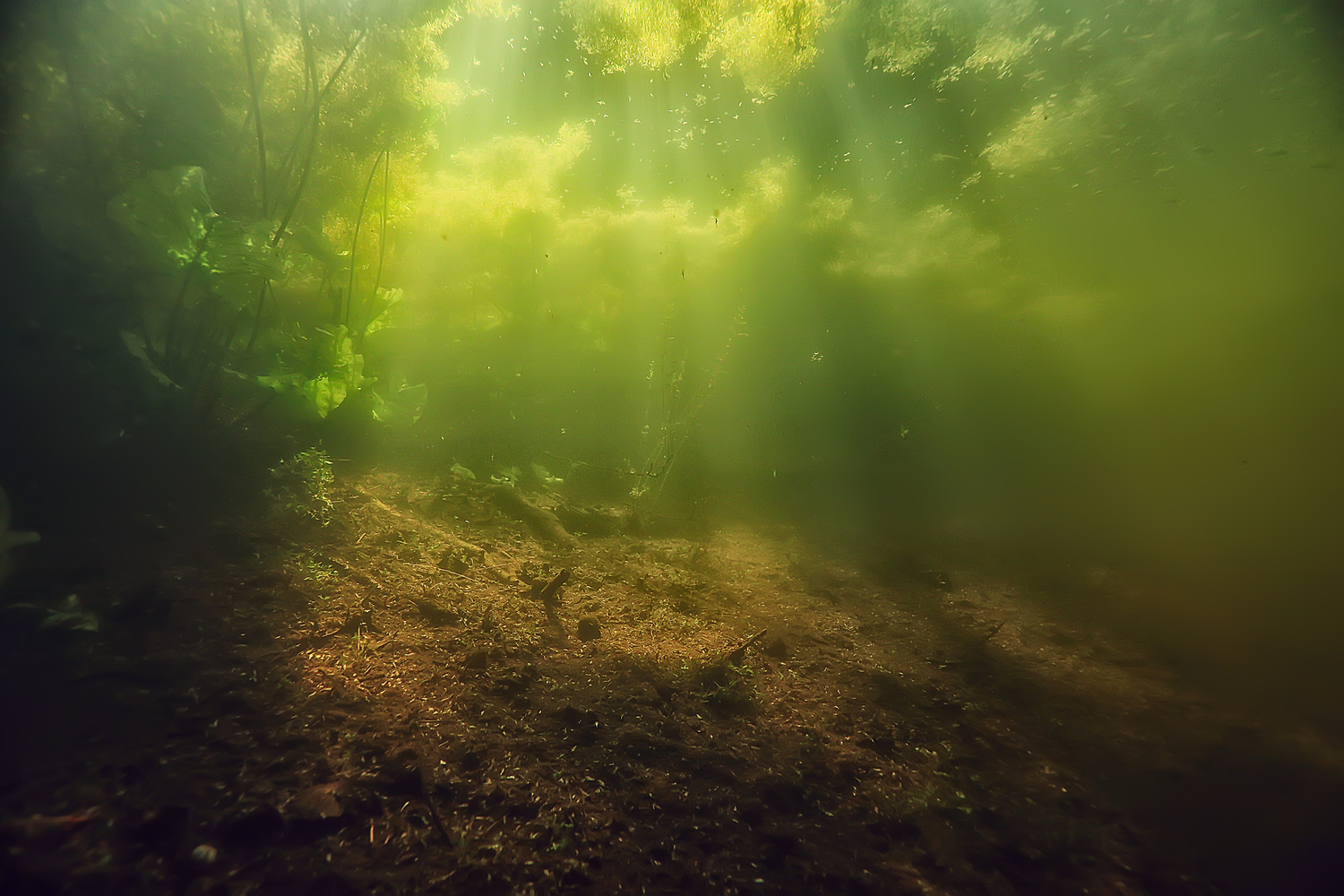
You are turning in your handmade (either on paper or digitally produced) pond food web that contains all of the required sketched and labeled components. You can be creative as long as you include the required elements.
It may help to review food webs here.
Would it help to have additional information on pond organisms? If so, we have a video of commonly observed pond protists on the resources page.
The next section introduces wetlands; part aquatic and part terrestrial habitats.

Check your knowledge. Can you:
- classify lakes based on productivity and identify three different lake zones?
- identify microscopic and macroscopic photosynthetic pond organisms?
- identify microscopic and macroscopic pond consumers and incorporate them, along with producers and decomposers, into a pond food web?



